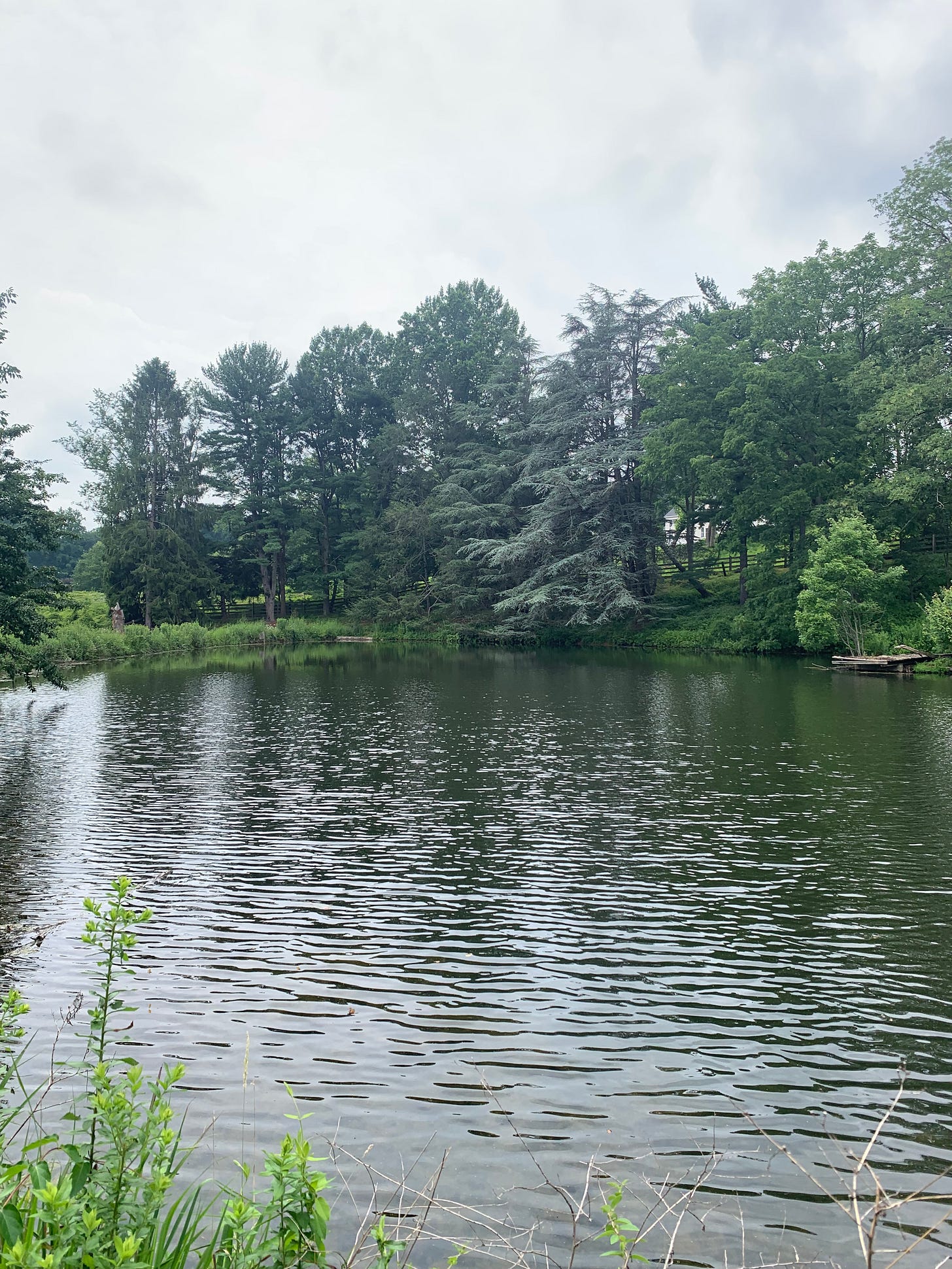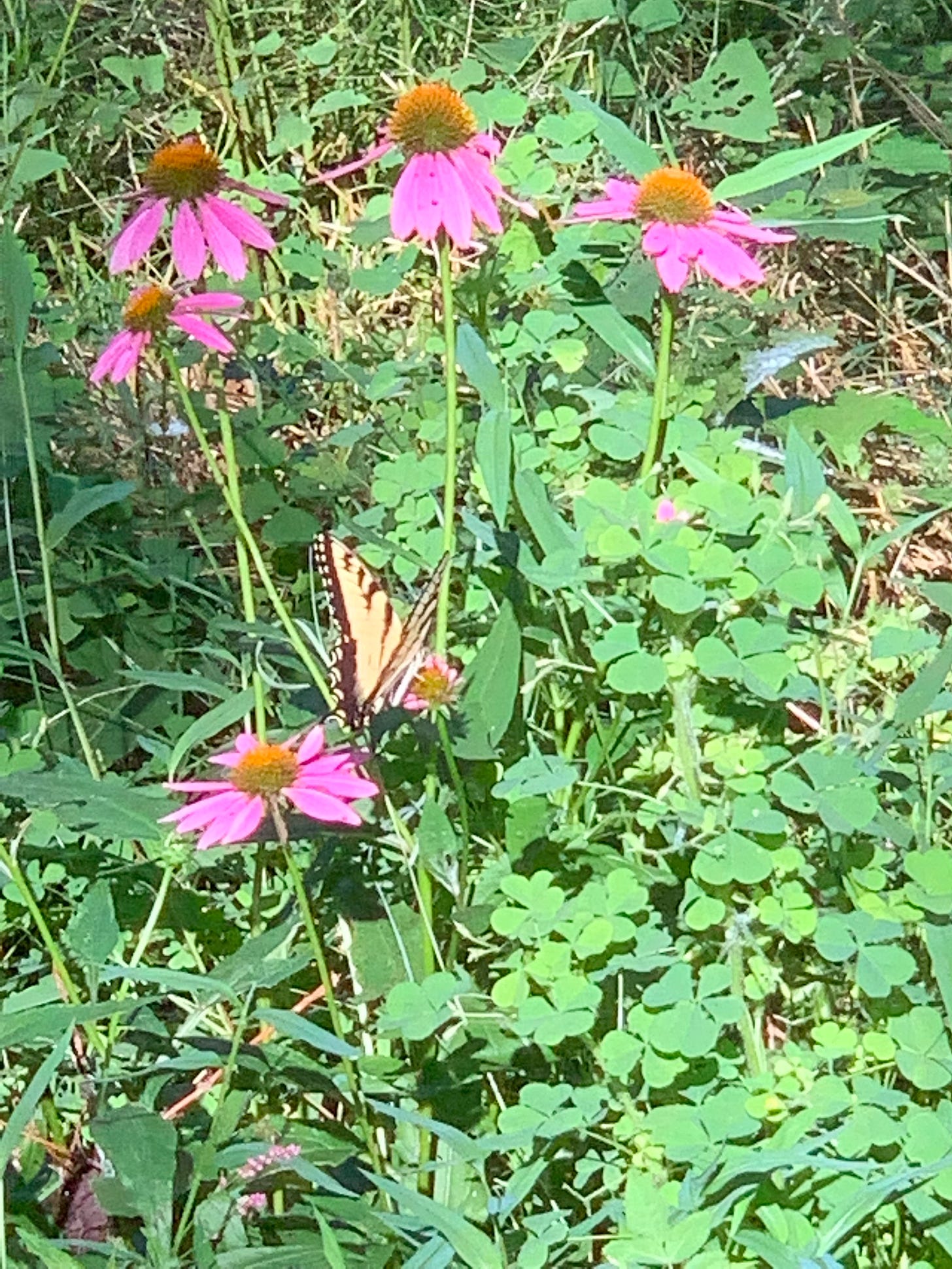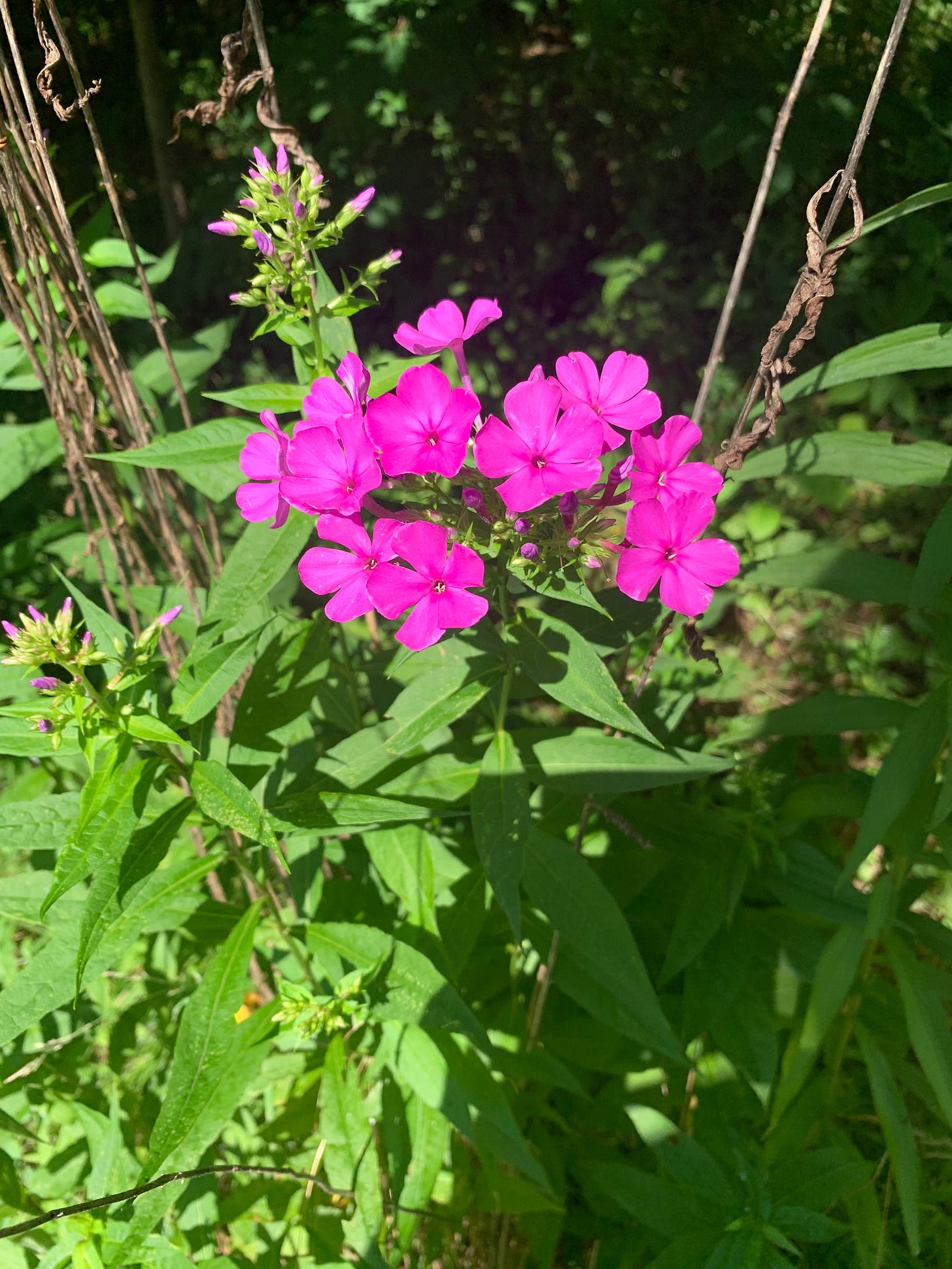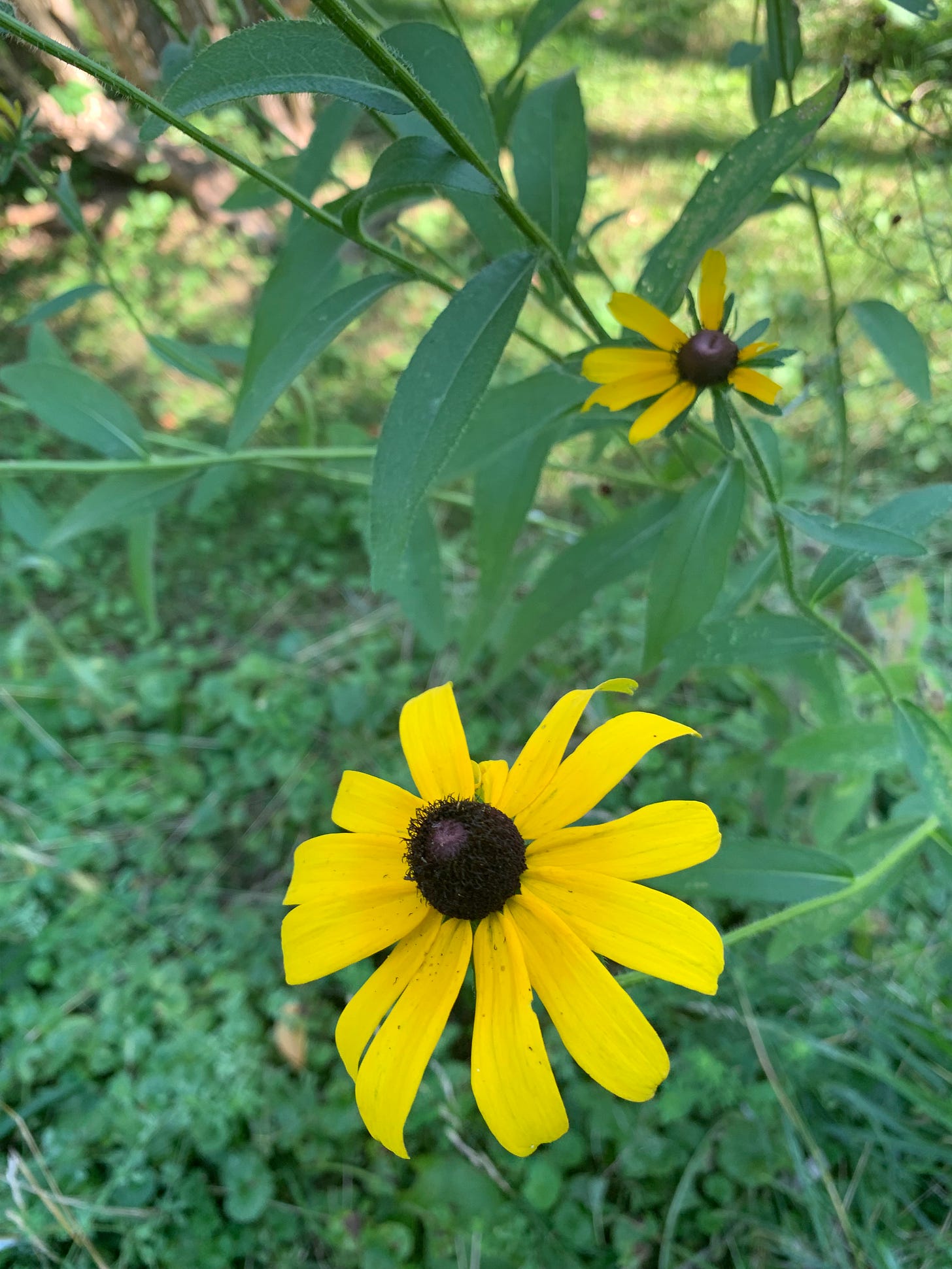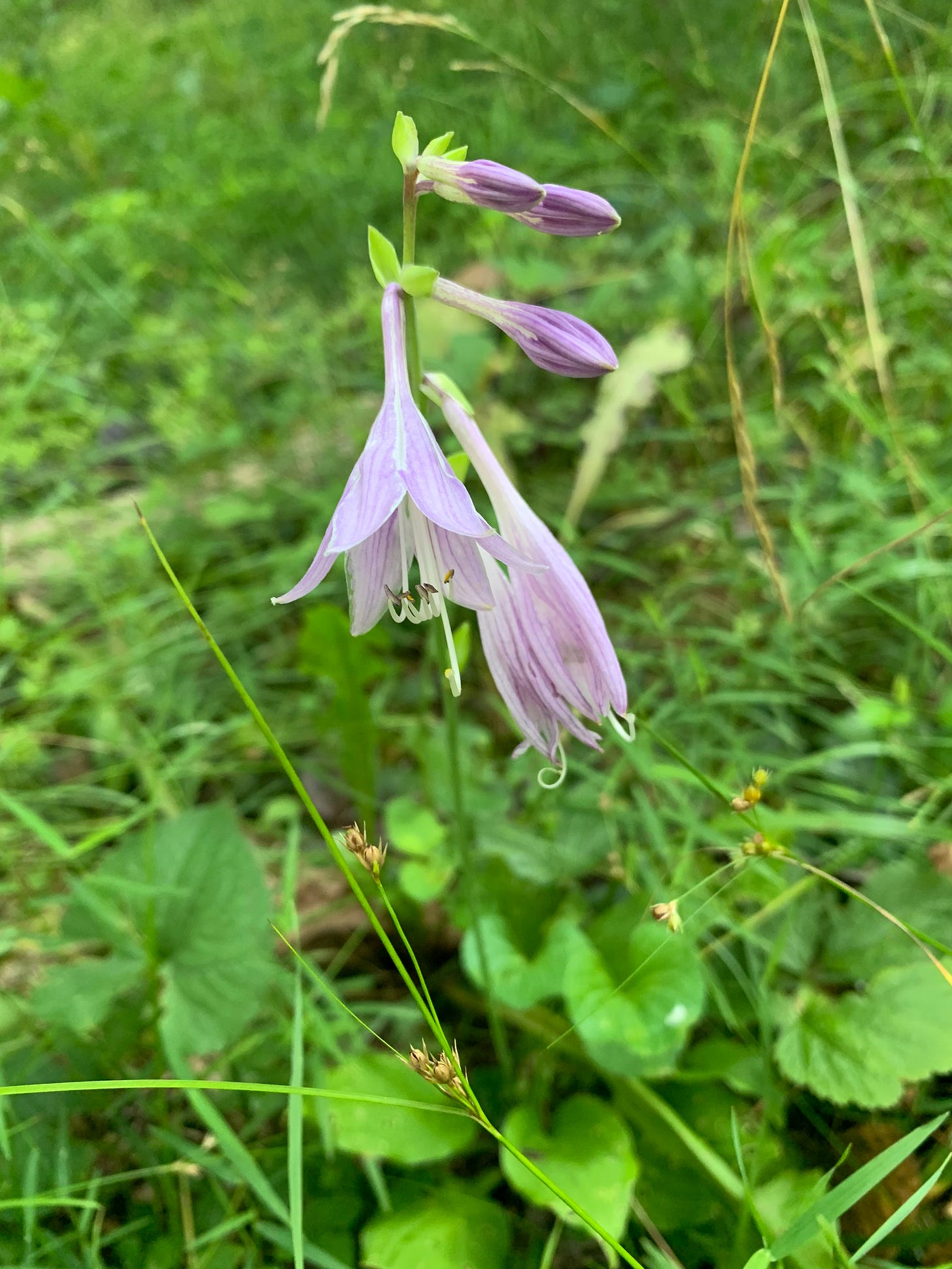Mourning the Monarchs
Puddock Hill Journal #16: We can pretend all we want, but actions have consequences.
Here in the Brandywine Valley, where this spring and summer it seems to rain every two days, the vistas are shining emerald green, the trees are lush with leaves, and the meadows are an impenetrable army of vegetation. Frogs and fish and turtles bring life to full ponds.
You could too easily forget, for a brief minute, that all is not right with the world.
Heat records are falling, glaciers receding, rivers drying—the Colorado, the Rio Grande, the Po, the Rhine, the Yangtze, the Yellow. The American Southwest parches. Europe burns.
On July 21, 2022, the International Union for the Conservation of Nature “added the migrating monarch butterfly for the first time to its ‘red list’ of threatened species and categorized it as ‘endangered' — two steps from extinct,” according to NPR. In the past three decades, the monarch population in the eastern United States has declined between 85% and 95%. Despite a small recovery last year, the numbers are even worse in the West.
Just a few days before the Union’s pronouncement, I had been lamenting to my wife how few butterflies we’ve seen this year, despite our efforts as backyard stewards. She noted, quite rightly, that a patch of 16 acres can’t isolate itself from the world.
The main thrust of backyard stewardship comes from Douglas Talamy of the University of Delaware, who in the popular imagination connected the decline of nature in our backyards to the decline of arthropods, brought about by what we choose to plant in those same backyards. I embrace this wholeheartedly, but I wish it were really as simple as doing a few things right on our own properties.
My Twitter feed this week was a discouraging mix of accurate cries of alarm from climate scientists…


…and statements of ignorance from both sides of the political spectrum.
The progressive congresswoman AOC tweeted a suggestion that if the world fully embraces the techniques of small farm regenerative agriculture, we will find “the key to protecting our entire global food supply from climate change.” By all means, we should incorporate regenerative agriculture techniques into our food systems, but the idea that they can feed the world if we all switched over is hopelessly misguided. The fact is regenerative agriculture is less productive per acre than conventional agriculture. Converting the entire world to regenerative agriculture would lead to increased habitat destruction as farmers mow down virgin areas.

On the other end of the political spectrum, Elon Musk, who has lately been calling for greater population growth in the world, replied “yes” when Pranay Pathole, a software developer in India, tweeted, “Earth could basically maintain 2 to 3 times the current population. Earth has enough resources.” This derived from a thread where a map was shared that shows much of Earth’s land mass empty of humans. The logic fails to acknowledge that much of that empty land is a challenge for humans to inhabit by virtue of its ruggedness and dryness (although, I guess the guy who thinks we can soon live on Mars considers this a surmountable challenge). But, more important, it ignores the fact that the biosphere is a complex system upon which human existence relies. Our existence doesn’t only hang on how much ore we can pull out of the ground.

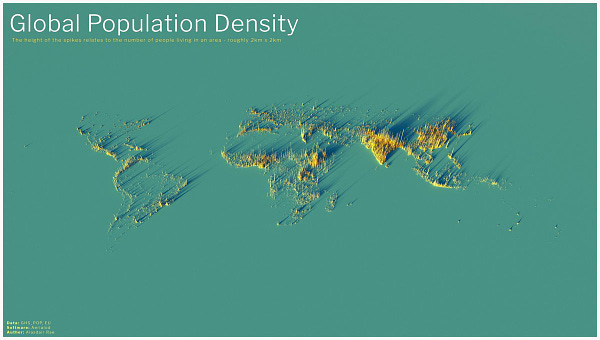
I also got into an absurd Twitter exchange with a fiction writer in Bulgaria (although I think she’s English) who often posts pictures of her garden. After she posted a picture of a butterfly bush (Buddleja davidii), I gently reminded her that the butterfly bush (which originates in China) is considered an invasive plant in many places because its flowers do not provide proper nutrition for native butterflies and, far worse, because there are literally no butterfly species (in North America, at least) whose larvae can survive eating its leaves. In short, starving caterpillars, no butterflies. She said this has to be nonsense because (a) she never heard of such thing and (b) she sees plenty of butterflies. Well, then.
Finally—I swear, I’m going to connect these dots—someone posted the most absurd real-life exchange that occurred on a UK news program, preceded by a clip from the movie Don’t Look Up. In the movie clip, in response to warnings of an asteroid imminently destroying the planet, a talk show host (played by Cate Blanchett) pushes back by telling Jennifer Lawrence’s character that, “Well, it’s something we do around here. We just try and keep the bad news light.” Life imitates art: A clip follows of a UK meteorologist doing a stand up on the dangers of the heatwave then bearing down on Britain. The chipper real-life talk show host says, “So, John, I want us to be happy about the weather, and I don’t know whether something’s happened to meteorologists to make you all a little bit fatalistic and harbingers of doom.” Even Rupert Murdoch’s NY Post labeled this “surreal.”
Many of the planetary systems that have sustained humanity are in serious trouble, mostly, if not entirely, due to our actions. One significant data point is the decline of arthropods.
Anyone over fifty can tell you anecdotally that the insects they used to observe in an average summer in the Northeast are fewer and farther between. We saw a few more fireflies this year than last, but nothing like the numbers we witnessed growing up. A road trip results in fewer bugs stuck to the grill and windshield than it used to. In the garden, butterflies are fewer. Bees are fewer. The once ubiquitous American bumblebee may soon go on the Endangered Species list. Ninety percent have disappeared in my lifetime.
A study in Germany conducted between 2008 and 2017 found that the biomass of arthropods in grasslands there declined by 67%, their abundance declined 78%, and the species counted declined 34%. In forests, biomass of arthropods decreased by 41% and the number of species by 36%. What some have called the Bugpocalypse is not just a German phenomenon. It’s happening all over the world.
Climate change is a factor in the decline of arthropods, but it is not the biggest factor. Monocultural agriculture (and gardening!) limits the nutrition available to insects. Habitat destruction and fragmentation denies them places to thrive. The overuse and indiscriminate use of pesticides kills them or their food sources, even if they are not the target.
Monarch butterflies migrate farther than any known insect species on Earth, from Mexico to Canada and back, with multiple generations reproducing along the way. We can plant all the milkweed we want at home, but if we destroy the montane forests of Mexico through logging or they burn due to climate change, the migratory monarchs will disappear, and no amount of fantastical thinking will bring them back.
How’s that for a harbinger of doom?
On a happier note, the big pond is looking clearer than ever, thanks to efforts I’ll document in a later post:
Easter tiger swallowtail (Papilio glaucus) on Eastern purple coneflower (Echinacea purpurea) that we moved into the small pond meadow to clear room for the raised beds last summer:
Phlox that we moved down to the small pond shore when we redid the garden:
Blacked-eyed Susan (Rudbeckia hirta) that we planted from seed two years ago:
Seeds on an old Eastern redbud (Cercis canadensis):
We spotted this beautiful flower on a morning walk but can’t identify it:




